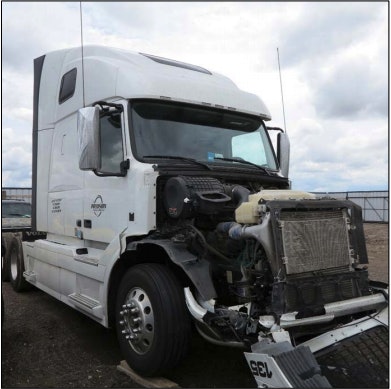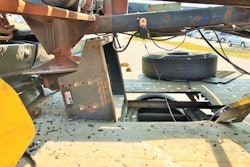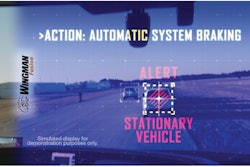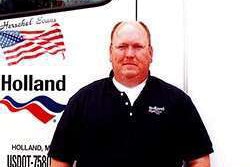 A 2016 Volvo tractor struck the back of an SUV loaded with 11 passengers in June 2016, killing six and injuring five. The National Transportation Safety Board reiterated the need for the implementation of its Most Wanted List of Transportation Safety Improvements as a result. (NTSB photo)
A 2016 Volvo tractor struck the back of an SUV loaded with 11 passengers in June 2016, killing six and injuring five. The National Transportation Safety Board reiterated the need for the implementation of its Most Wanted List of Transportation Safety Improvements as a result. (NTSB photo)The National Transportation Safety Board this week reiterated the need to implement the Board’s Most Wanted List of Transportation Safety Improvements in a report on a crash from 2016 in which a tractor-trailer rear-ended an SUV, killing six and injuring five. NTSB didn’t specify which of the Board’s safety reforms could have prevented the crash, but the list does includes reforms like implementing video monitoring and collision avoidance systems, eliminating driver distractions and reevaluating hours of service.
NTSB does not have any regulatory power. It instead only issues recommendations to regulatory agencies.
NTSB’s Rob Malloy, director of the Board’s Office of Highway Safety, says NTSB did not issue safety recommendations specifically based on the findings of this particular crash, but notes the investigation “does emphasize the need to implement the 15 NTSB safety recommendations to improve highway safety and reduce the number and severity of highway crashes.”
In the June 2016 crash, a seven-passenger SUV with a total of 11 occupants was hit from behind by a 2016 Volvo tractor-trailer on I-70 near Goodland, Kansas. NTSB says survivors of the crash believed their vehicle was traveling near the posted minimum speed limit of 40 miles per hour, while the truck was traveling near the posted maximum speed limit of 75 mph at the time of impact.
In its investigation, NTSB determined the truck driver’s failure to take action to avoid the crash “due to his fatigue and lack of expectancy to encounter the slow-moving SUV led to the crash.” Additionally, the SUV driver’s decision to travel at a reduced speed without using the car’s flashing hazard lights also contributed to the crash. Finally, the overloading of the SUV and lack of a collision avoidance system on the truck contributed to the severity of the crash, NTSB says.








